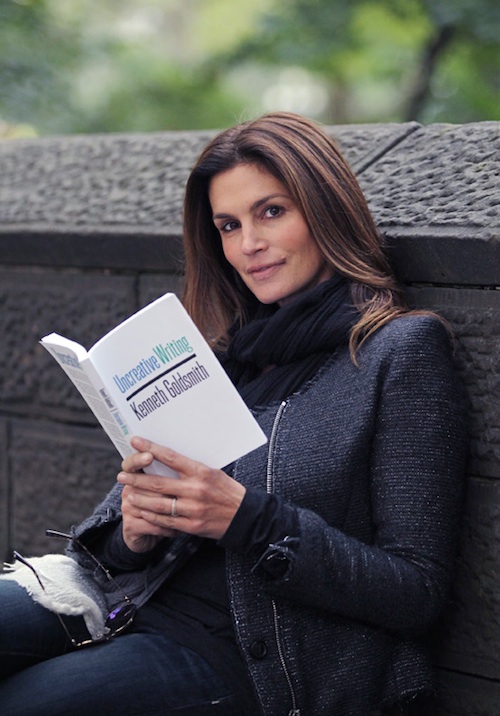Josef Hiršal, Bohumila Grögerová (eds.): Slovo, písmo, akce, hlas: K estetice kultury technického věku (1967) [Czech]
Filed under book | Tags: · aesthetics, art, art theory, avant-garde, chance, computer art, concrete poetry, experimental art, fluxus, happening, kinetic art, lettrism, literary theory, manifesto, music theory, poetry, technology, visual poetry

A unique anthology of essays, manifestos and artistic programs from the period 1950-1965 by Jasia Reichardt, George Brecht, George Maciunas, Ben Vautier, Eugen Gomringer, Décio Pignatari, Max Bense, Umberto Eco, and others.
“Tento sborník teoretických studií, esejů, článků a uměleckých manifestů napsaných v prvních patnácti letech druhé poloviny dvacátého století, chce být v prvé řade informací. Informací o estetice toho, co bývá globálně nazýváno experimentálním uměním, vznikajícím v technické civilizaci a realizujícím rozličné tendence a programy v různých částech světa. Chce osvětlit tento pojem a poukázat na rozdílnost jeho aplikací i výkladů. Navíc pak chce poskytnout v českém překladu přímo pramenné materiály o nových druzích poezie (o poezii umělé, konkrétní, auditivní, verbofonické, grafické), o umění lettristickém, permutacionálním, totálním, o splývaní dosud samostatných uměleckých disciplín a žánrů i o krystalizaci a výskytu nových, reprezentovaných především akcemi (happening aj.).
Ve sborníku je zařazeno vedle statí, studií a manifestů uměleckých skupin, teoretiků i samotných umělců i několik přehledů historických a vývojových, ukazujících souvislosti současného umění s etapami předchozími a podávajících další důkazy o jeho univerzalitě i diferenciaci. Materiály sborníku netvoří ani v náznaku kompaktní celek. Jsou spíše jednotlivými, někdy dokonce přímo si odporujícími hlasy vzrušeného rozhovoru, vytvářejí konglomerát různých tendencí, názorů a reakcí na skutečnost a stav civilizace druhé poloviny našeho století v rozdílných společenských podmínkách. Záměřem pořadatelů bylo přiblížit je našim zasvěcenějším i laickým čtenářům a poskytnout tak hlubší předpoklady k vnímání současných uměleckých artefaktů i k pochopení jejich metodologie.
Shrnutím nejvýraznějších, mnohdy však i nejproblematičtějších současných estetických tendencí představuje tento sborník materiál, který — právě snad pro svou názorovou diferenciaci, rozpornost a nesmiřitelnost — nemá dosud ve světě obdoby. Bylo by si proto jen přát, aby se názorům a informacím v něm obsaženým dostalo žádoucího doplnění ve zpřístupnění korespondujících konkrétních uměleckých výtvorů jak světové, tak i naší skromnější provecience, resp. v pokračujícím zpřístupňování, protože mnohé již u nás známe jsou. Padly by tak poslední falešné mýty a představy — a to jak ze strany snobů, tak diletantů — a byla by i v této oblasti dokořán otevřena cesta k přirozenému a nevyhnutelnému vývojovému výběru.” (from the Introduction)
With an Afterword by Jiří Levý
Publisher Československý spisovatel, Prague, 1967
Volume 1 of Monoskop Unlimited Edition series
256 pages
PDF (40 MB, no OCR)
Comment (0)Vasily Kamensky: Tango With Cows: Ferro-Concrete Poems (1914) [Russian]
Filed under artist publishing | Tags: · concrete poetry, cubo-futurism, futurism, poetry, typography, visual poetry
Tango With Cows is an artists’ book by the Russian futurist poet Vasily Kamensky, with three drawings by the brothers David and Vladimir Burliuk. Printed in an edition of 300, the work has become famous primarily for being made entirely of commercially produced wallpaper, with a series of concrete poems – visual poems that employ unusual typographic layouts for expressive effect – printed onto the recto of each page.
Beginning with a drawing by Vladimir Burliuk of a woman, the poems are split into two sections; the first contains 8 concrete poems that use multiple fonts and unusual spacings to express sounds and textures. Telephone, for instance, starts with ‘Telephone No. 2B_128 / rgrgrrrrrr______rrg’. The second group of 6 are arranged within diagonal grids, that evoke both the cubist paintings of Picasso and Braque, and the moulds that are used to make reinforced concrete. These poems refer directly to aerial views, maps and floor-plans. (from Wikipedia)
Tango s korovami: zhelezobetonnye poemy [Танго С Коровами: Железобетонныя Поэмы]
Published in Moscow, 1914
36 pages
via Archive.org
PDF
PDF (single-page PDF of a volume bound in a slightly different order)
Eduardo Kac’s translation of the poem “Telephone”
TangoWithCows.com, a project to translate the book into English (forthcoming mid-2014)
Kenneth Goldsmith: Uncreative Writing: Managing Language in the Digital Age (2011)
Filed under book | Tags: · appropriation, authorship, conceptual writing, concrete poetry, data, language, literary theory, literature, poetry, technology, text, uncreative writing

“Can techniques traditionally thought to be outside the scope of literature, including word processing, databasing, identity ciphering, and intensive programming, inspire the reinvention of writing? The Internet and the digital environment present writers with new challenges and opportunities to reconceive creativity, authorship, and their relationship to language. Confronted with an unprecedented amount of texts and language, writers have the opportunity to move beyond the creation of new texts and manage, parse, appropriate, and reconstruct those that already exist.
In addition to explaining his concept of uncreative writing, which is also the name of his popular course at the University of Pennsylvania, Goldsmith reads the work of writers who have taken up this challenge. Examining a wide range of texts and techniques, including the use of Google searches to create poetry, the appropriation of courtroom testimony, and the possibility of robo-poetics, Goldsmith joins this recent work to practices that date back to the early twentieth century. Writers and artists such as Walter Benjamin, Gertrude Stein, James Joyce, and Andy Warhol embodied an ethos in which the construction or conception of a text was just as important as the resultant text itself. By extending this tradition into the digital realm, uncreative writing offers new ways of thinking about identity and the making of meaning.”
Publisher Columbia University Press, 2011
ISBN 0231149913, 9780231149914
272 pages
Interviews with author: CUP blog (2011), Mark Allen (The Awl, 2013).
Reviews: Andrea Quaid (American Book Review, 2011), Sam Rowe (Full Stop, 2011), Stephen Burt (London Review of Books, 2012), Amelia Chesley (J Electronic Publishing, 2012), Michael Jauchen (HTMLGiant, c2012), Grant Matthew Jenkins (James Joyce Quarterly, 2012), Andrew McCallum (English in Education, 2013).
Commentary: Special section of American Book Review dedicated to uncreative writing (ed. Doug Nufer, 2011).
HTML (added on 2016-03-01)
EPUB (updated on 2015-10-9)


